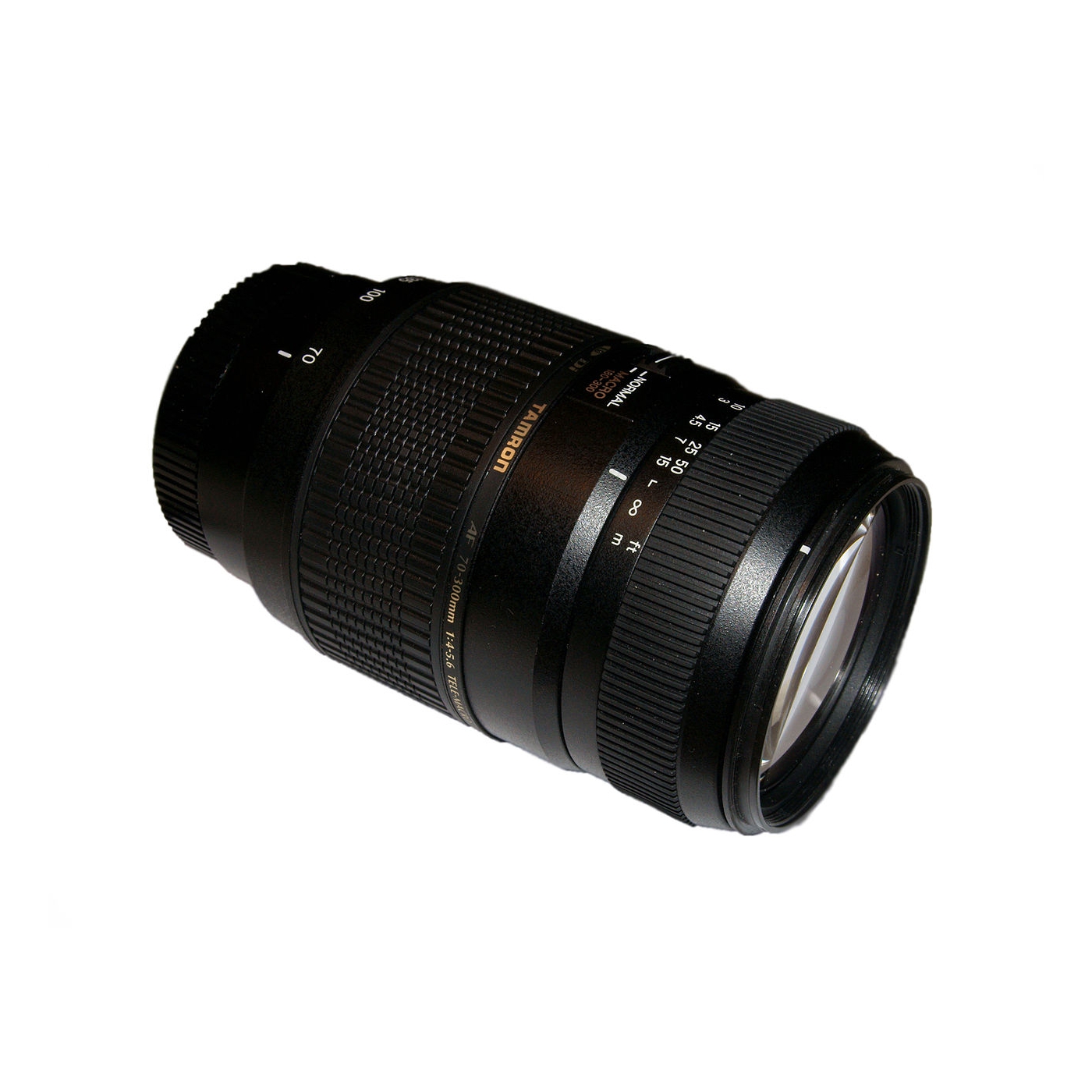- Home
- Product
- Category
- Cara Sewa
- About us
- Blog
SHARE
The Tamron 70-300mm f/4-5.6 Di VC is a new telephoto zoom that covers a convenient and popular telephoto range. In Tamron terminology, Di means the lens is optimized for digital cameras and VC is vibration compensation, similar to Canon's image stabilization (IS) and Nikon's vibration reduction (VR).
The Tamron 70-300mm lens has the higher-end AF motor so that one can manually override AF in real time; there is no need to switch off AF first before one can manually focus this lens. Under bright sunlight, AF speed is quite reasonable. However, under dim light, due to its f/5.6 maximum aperture on the long end, AF tends to hunt a bit. Overall, I am quite happy with the AF speed and accuracy.
I ran a number of comparisons at 300mm among the Tamron zoom, Nikon's 300mm f/2.8 AF-S, and Nikon's new 28-300mm f/3.5-5.6 AF-S VR zoom. The 300mm f/2.8 is among the sharpest lenses I own and when it is stopped down to f/5.6, it is simply super. Of course the Tamron zoom is not quite at that level, but it comes surprisingly close. The Nikon 28-300 super zoom is still respectable on the FX-format D700, but on the DX D300 with denser pixels, it looks a little soft. Overall, I would say sharpness is the greatest strength for this Tamron zoom.
There is a small amount of barrel distortion on the long end of this zoom lens, i.e. at 300mm. The distortion is still noticeable at 135mm, but at the minimum 70mm, this lens is essentially distortion free.
The Tamron zoom exhibits a small amount of chromatic aberration as there is a clear color band in any light-to-dark transition. In comparison, chromatic aberration is much better controlled on Nikon's 300mm f/2.8.
Concerning vignetting, I captured images of a uniform blue sky with the zoom wide open at 70mm as well as 300mm. There is a bit of darkening in the corners but that is not something I would be concerned about.
My estimate is that VC on the Tamron 70-300mm can provide somewhere between 2 to 4 stops of vibration reduction. If I hand hold the lens at 300mm, typically I can get a reasonably sharp image at 1/60 sec with a still subject. In other words, a 2 to 3 stop gain is usually achievable. When engaged, Tamron's VC make a noticeable "click" sound and if you pay close attention to the image in the camera's viewfinder, it will make a sharp jump before settling down, which indicates that the VC elements are making some quick movement inside. In contrast, Nikon's VR is smoother and quieter.
The lens comes with a HA005 lens hood that is made in the Philippines. It is a modern "petal" style hood that is very deep. While it does a good job preventing stray light from entering the front end of the lens, should have you a polarizer on the lens, it is difficult to rotate the filter when the hood is on.
Speaking of polarizers, the front of this lens does not rotate when you focus. Therefore, it is unnecessary to re-adjust the rotation of the polarizer after focusing. This lens has a front element that is very close to the very front of the lens; therefore, I think it is fairly easy to scratch the front element such that a clear protection filter is probably a good idea.
Construction-wise, it is fairly typical consumer grade with a plastic barrel, but the lens mount is metal. Unlike a lot of new Nikon lenses, the Tamron has no rubber ring around the mount to seal moisture out between camera and lens. The focus ring is a little too loose. Rotation of the zoom ring is slightly rough as the lens needs to physically extend quite a bit when it zooms from 70mm to 300mm. Overall, I would say the build quality is acceptable; it is not an area of concern, but the feel is quite different from those higher-end lenses that cost a lot more; that should be expected.
The Tamron 70-300 has two rings, for zooming and focusing. The zoom ring rotates in the same direction as the zoom rings on Nikon zoom lenses. (That is, if you have a zoom lens mounted on your camera and you are looking through the viewfinder, you rotate the zoom ring clockwise to increase the focal length). However, the focus ring rotates in the opposite direction. On the Tamron, you rotate clockwise to focus closer; on a Nikon lens, you rotate counterclockwise to focus closer. To me, it is not an issue, especially since I use auto focus most of the time. However, it annoys some people.
The Tamron 70-300mm f/4-5.6 Di VC is surprisingly good optically. It is merely a little bit less sharp compared to my Nikon 300mm f/2.8 AF-S, stopped down to f/5.6. The Tamron does have more chromatic aberration, i.e. color fringing in light-to-dark transitions. Construction wise it is very typical consumer grade with mostly plastic components, but the lens mount is metal; I consider that adequate.
Similar to all other 70-300mm lenses, the long end is on the slow side at f/5.6. It is not an issue under bright sunlight, but at dawn and dusk as well as indoors, it is frequently necessary to turn up the ISO. In other words, this lens is good for outdoor telephoto photography such as family, children sports, and casual wildlife photography. For those who are interested in a telephoto zoom on a budget, the new Tamron 70-300mm is an excellent choice.

The maximum aperture varies along with the focal length in the following manner:
| Focal Length | Maximum Aperture |
|---|---|
| 70mm | f/4.0 |
| 100mm | f/4.2 |
| 135mm | f/4.5 |
| 200mm | f/5.3 |
| 300mm | f/5.6 |

Masukkan keterangan Fitur disini.
